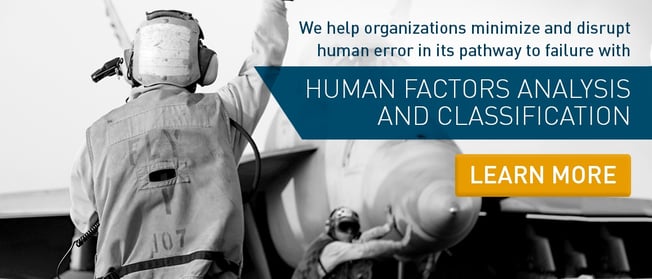 Without truly understanding the key elements (and possessing the necessary skills) to conduct a thorough, effective investigation, people run the risk of missing key causal factors of an incident while conducting the actual analysis. This could potentially result in not identifying all possible solutions including those that may be more cost effective, easier to implement, or more effective at preventing recurrence.
Without truly understanding the key elements (and possessing the necessary skills) to conduct a thorough, effective investigation, people run the risk of missing key causal factors of an incident while conducting the actual analysis. This could potentially result in not identifying all possible solutions including those that may be more cost effective, easier to implement, or more effective at preventing recurrence.
Here we outline the 5 key steps of an incident investigation which precede the actual analysis.
1. Secure the incident scene
- Identify and preserve potential evidence
- Control access to the scene
- Document the scene using your ‘Incident Response Template’ (Do you have one?)
2. Select investigation team
- The functions that must be filled are:
- Incident Investigation Lead
- Evidence Gatherer
- Evidence Preservation Coordinator
- Communications Coordinator
- Interview Coordinator
Other important considerations for the selection of team members include:
- Ensure team members have the desirable traits (What are they?)
- The nature of the incident (How does this impact team selection?)
- Choose the right people from inside and outside the organization (How do you decide?)
- Appropriate size of the team (What is the optimum team size?)
*Our Incident Investigator training course examines each of these considerations and more, giving you the knowledge to select investigation team members wisely.
3. Plan the investigation
Upon receiving the initial call:
- Get the preliminary What, When, Where, and Significance
- Determine the status of the incident
- Understand any sensitivities
- If necessary and appropriate, issue a request to isolate the incident area
- Escalate notifications as appropriate
The preliminary briefing:
- Investigation Lead to present a preliminary briefing to the investigating team
- Prepare a team investigation plan
4. Collect the facts supported by evidence
Tips:
- Be prepared and ready to lead or participate in an investigation at all times to ensure timeliness and thoroughness.
- Have your “Go Bag” ready with useful items to help you secure the scene, take photographs, document the details of the scene and collect physical evidence.
- Collect as much information as possible…analyze later
- Inspect the incident scene
- Gather facts and evidence
- Conduct interviews
*While every step in the Incident Prevention Process is crucial, step 4 requires a particularly distinct set of skills. A lot of time in our Incident Investigator training course is dedicated to learning the techniques and skills required to get this step done right.
5. Establish a timeline
This can be the quickest way to group information from many sources
Tip:
- Stickers can be used on poster paper to start rearranging information on a timeline. Use different colors for precise data versus imprecise, and list the source of the information on each note.
After steps 1-5 comes the Root Cause Analysis of the incident, solution implementation and tracking, and reporting back to the organization:
6. Determine the root causes of the incident
7. Identify and recommend solutions to prevent recurrence of similar incidents
8. Implement the solutions
9. Track effectiveness of solutions
10. Communicate findings throughout the organization
*Steps 6-10 are taught in detail at our Root Cause Analysis Facilitator training course.
To learn more on the difference between our Incident Investigator versus RCA Facilitator training courses, check out our previous blog article and of course, if you would like to discuss how to implement or improve your organization’s incident prevention process, please contact us.



